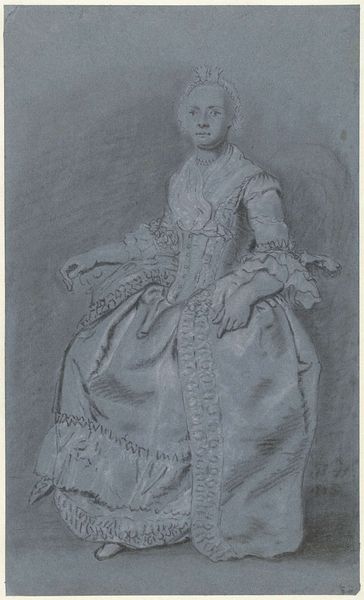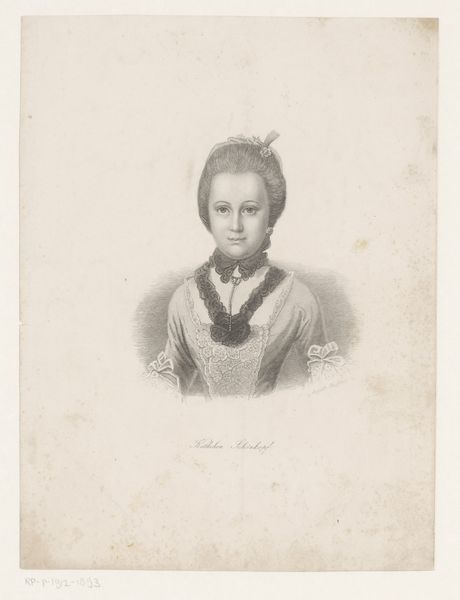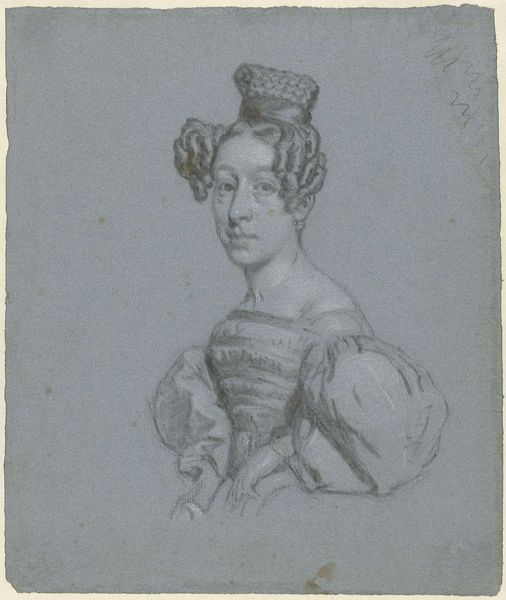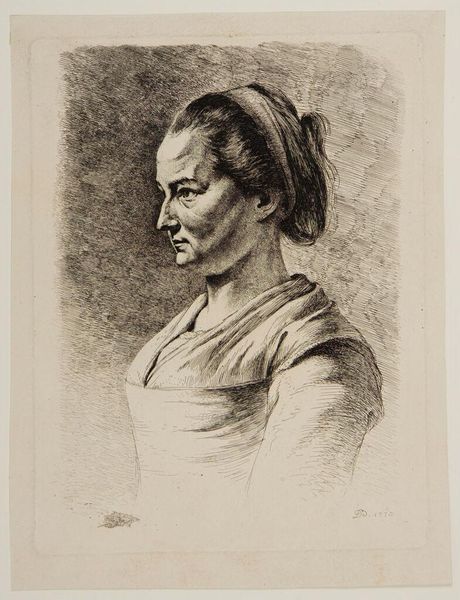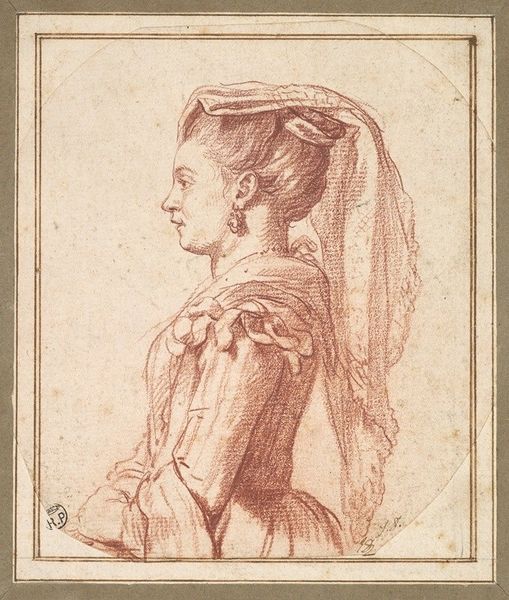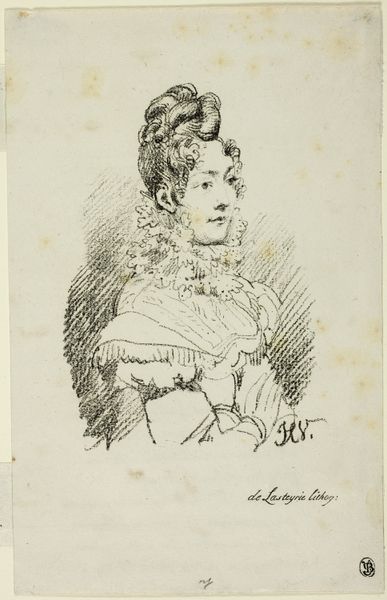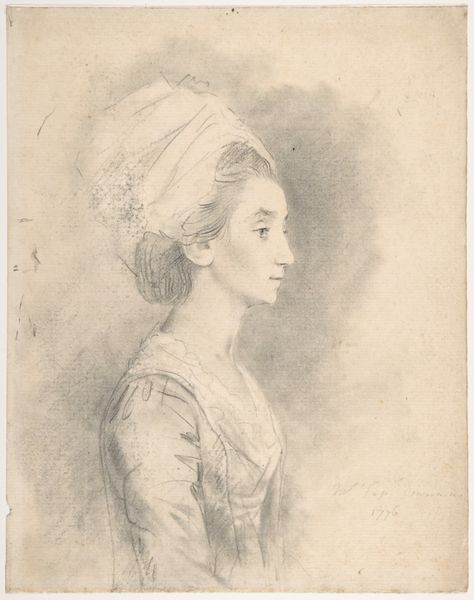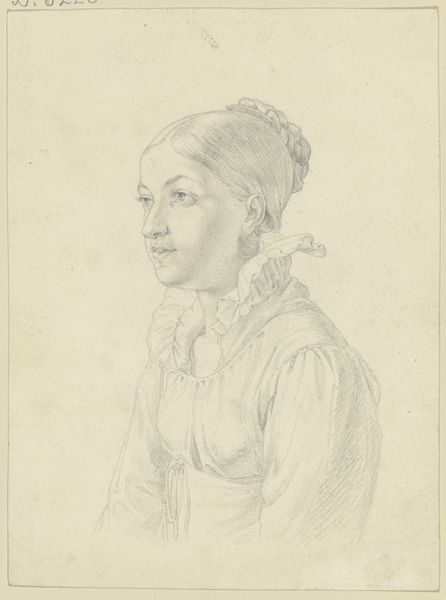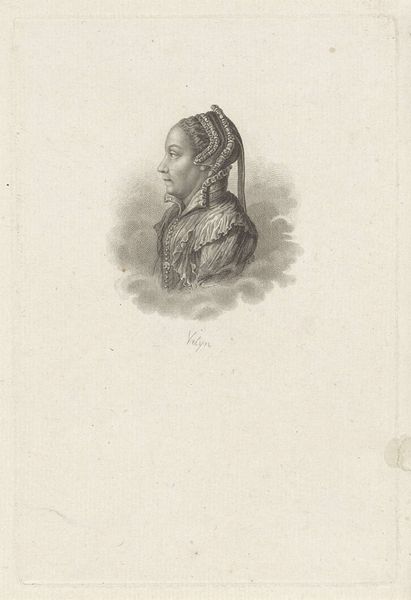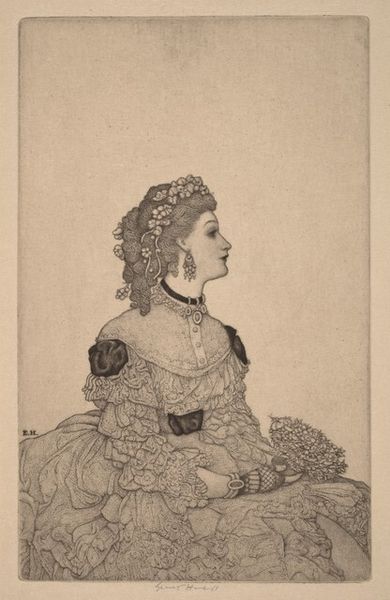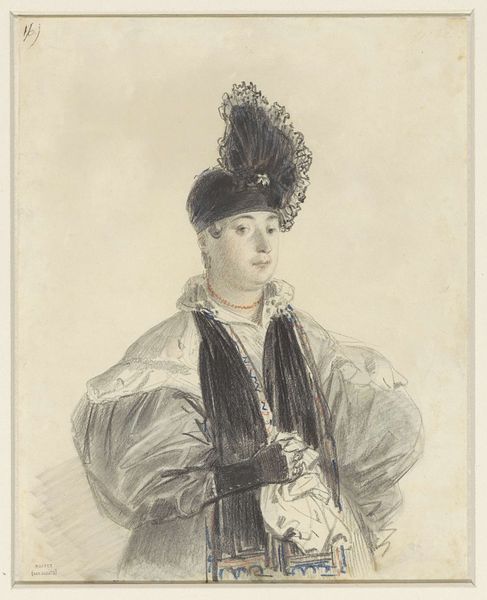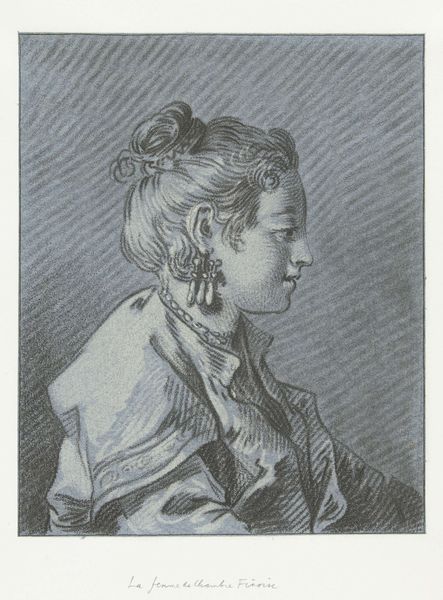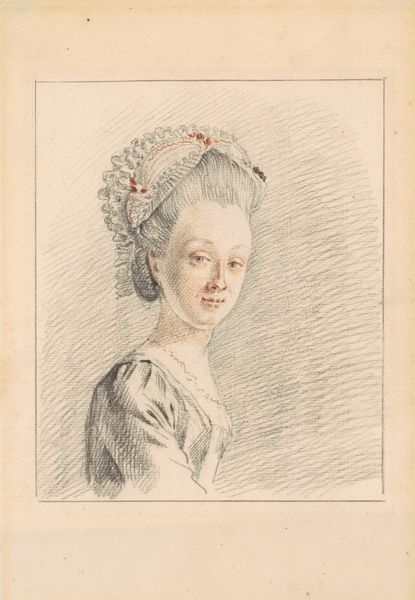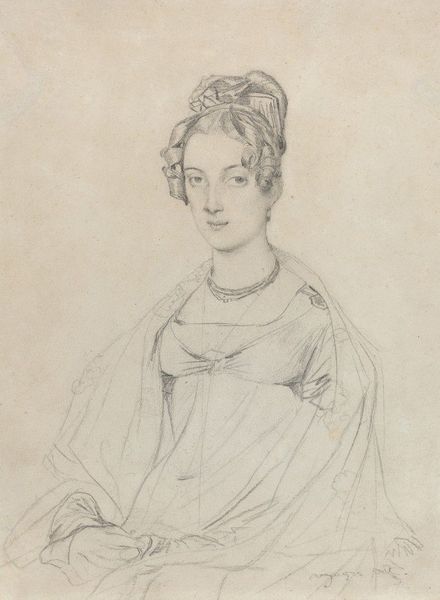
drawing, pencil
#
portrait
#
drawing
#
pencil drawing
#
pencil
#
academic-art
Dimensions: height 114 mm, width 95 mm
Copyright: Rijks Museum: Open Domain
Georg Friedrich Schmidt rendered this portrait of a woman using graphite. Her direct gaze and the delicate rendering of her features draw us in, but it is the adornments that speak volumes. The elaborate ruffles around her neck and the floral decorations in her hair are not merely fashionable embellishments. They echo the wreaths and garlands used since antiquity to denote status, celebration, and even sacrifice. Think of Roman emperors crowned with laurel, symbols of victory and divine favor, motifs that found their way into Renaissance portraiture, subtly communicating power and virtue. Here, in this 18th-century portrait, the echoes of these ancient symbols have softened, democratized. Yet, the underlying human impulse remains: to use adornment to elevate, to communicate, and to connect with a lineage of symbolic expression that stretches back through the ages. The desire to adorn, to signify, is a primal urge, a thread that ties us to our ancestors, each generation reinterpreting the language of symbols to suit their own time.
Comments
No comments
Be the first to comment and join the conversation on the ultimate creative platform.
